Contours that kill
During our podcast, Geoff Ogilvy alluded to the brilliance of Pinehurst #2’s design. It is an exacting test for the world’s greatest golfers but extremely playable for everyday golfers. It’s a rare course that brings the average player closer to the expert. It does it through brilliant strategy that starts with its spectacular green complexes.
During the groundbreaking 2011 restoration by Bill Coore and Ben Crenshaw, Pinehurst was able to recapture its soul. The project focused on returning the venerable championship test back to its best self. Back to when the course reflected the natural sandy and rugged landscape, and promoted firm and fast conditions and strategic play.
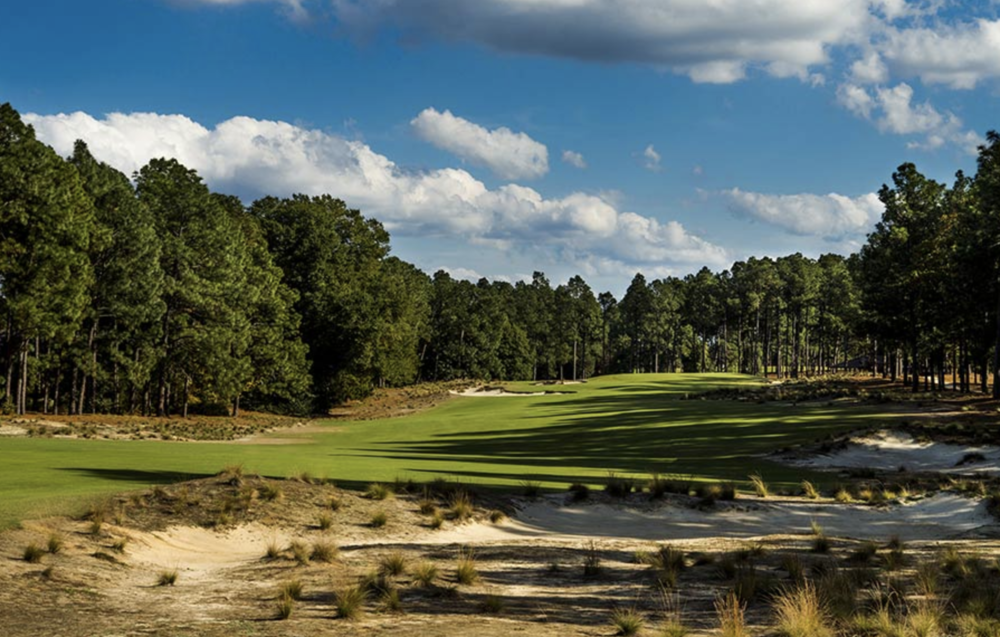
The 8th - Photo Credit: USGA
A hole that exemplifies the changes is the 8th. During regular resort play, the hole plays as a par-5, but for professionals, it’s a par-4. Remember, par is just a number!
As with almost every hole at Pinehurst #2, the first thing to do while examining strategy is understand the green. The majority of the greens are elevated with rolled-over edges. These edges have bold contours and send shots slightly off target, tumbling down off the green into short grass collection areas. Players that find the correct position off the tee or on their second shots have green contours work to their benefit.
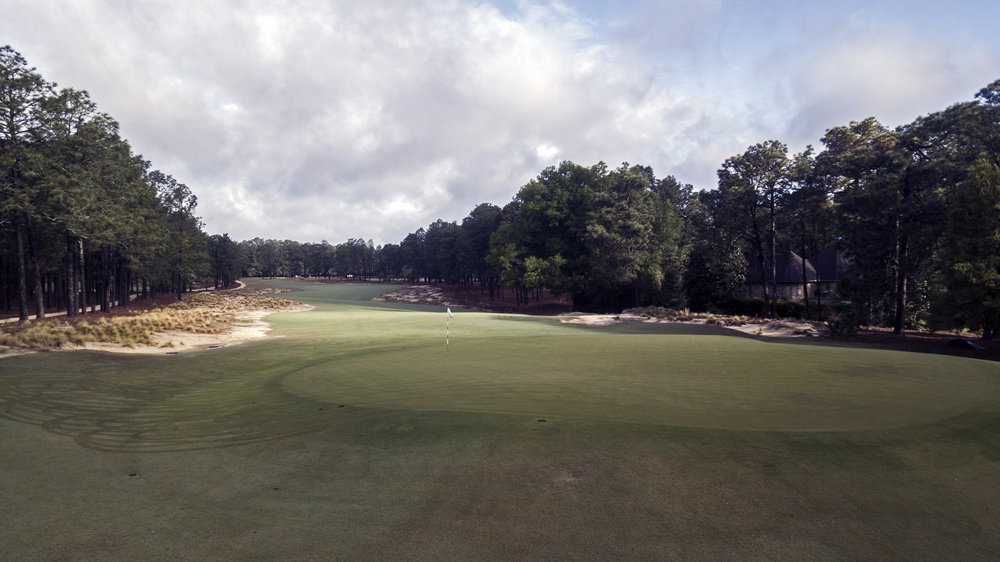
The 8th green at Pinehurst #2
The eighth green is no different. It’s elevated and has a severe back-to-front and left-to-right slope. The ideal angle is to approach the green from the right edge of the fairway. From that position, approach shots can use the upslope to their advantage. Every yard left of the right edge of the fairway produces a worse angle and tougher shot to approach the green. Attempting to approach the 8th green from the left side of the fairway gives a landing area the size of a picnic blanket… if that. Missing right of the green affords an opportunity to get up and down. Long or left is a nightmare and difficult to even keep the ball on the green.
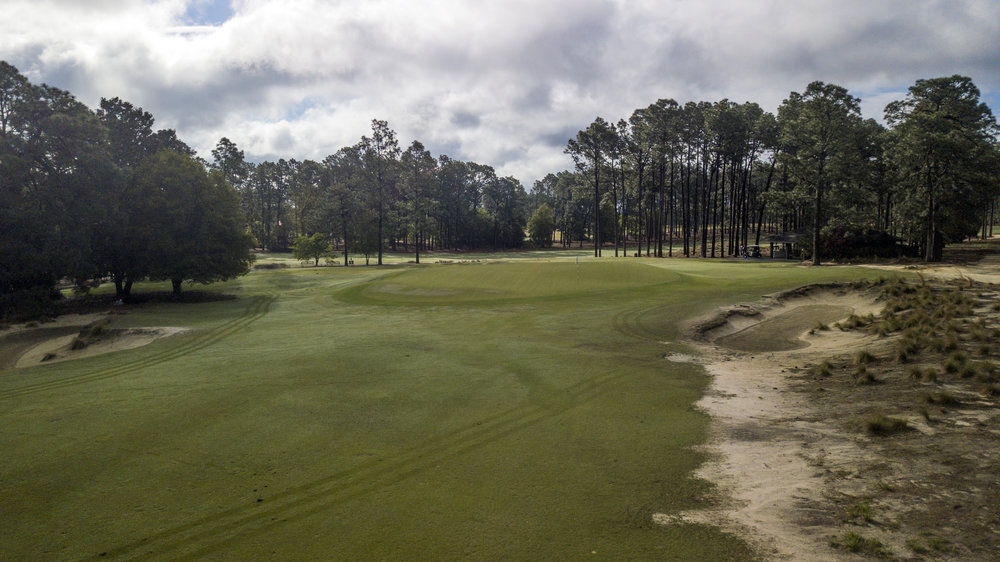
The 8th green from the right side is welcoming
Finding the right side of the fairway is a tough task thanks to Donald Ross‘s stellar use of the land. From the tee, the sandy waste area on the right obstructs the ideal line for a longer hitter. The land slopes from the right to the left, making the ideal shot from the tee a fade that counters the sloping fairway. The left side tightens about 270 yards out from 50 to 33 yards wide. Adding in the fairway slope, finding the fairway is a tall task and necessity for the long hitter or professional thinking 3 or 4. Meanwhile, for the everyday player who’s got 4 or 5 in their head, a 50-yard runway affords plenty of width.
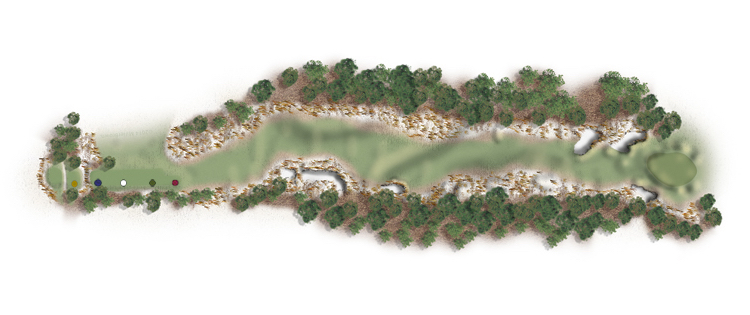
Plenty of width in the middle portion of the 8th - Diagram from Pinehurst Resort website
Approaching the menacing green, long hitters that find the fairway have a mid to long iron approach that ranges in difficulty depending on where you are on the fairway. From the right side, the green opens up, and an approach shot is welcomed by an upslope. Approaching from the left is a different story. The green runs left to right, and a false front protects the majority of the front part of the green. Just finding the green from the left requires an excellent shot. An additional subtle challenge to the shot is the left-to-right fairway slope. For a right-handed player, it promotes a right-to-left ball flight, a shot shape that lands harder and makes it more difficult to hold a perched green.
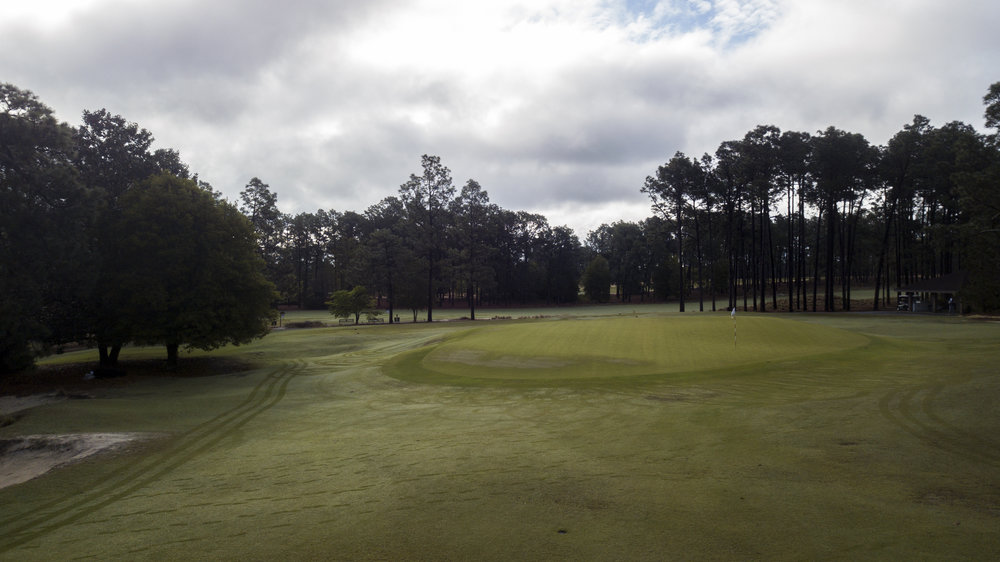
The look at the 8th green from the left side of the fairway
A miss off the tee finds the sandy native area. The left side is a bad position due to the angle. From the left, a wise play is to hit something short and right of the green. But the open look at the green entices and allows players to attempt the hero shot (I speak from experience). The chances of pulling off this shot are slim. By allowing the heroic attempt it leads to a few great recoveries but mostly carnage. Missing long or left is particularly painful. That’s the beauty of Pinehurst – it’s a constant test of patience and restraint. To have success, players have to consistently resist trying to hit the heroic shot from a disadvantaged position. The greens and angles give players just enough rope to either save themselves or hang themselves.
A fairway miss to the right isn’t nearly as bad because its angle to attack is advantageous. With a good lie in the native, an argument can be made that the right native area is a better position than the left side of the fairway.
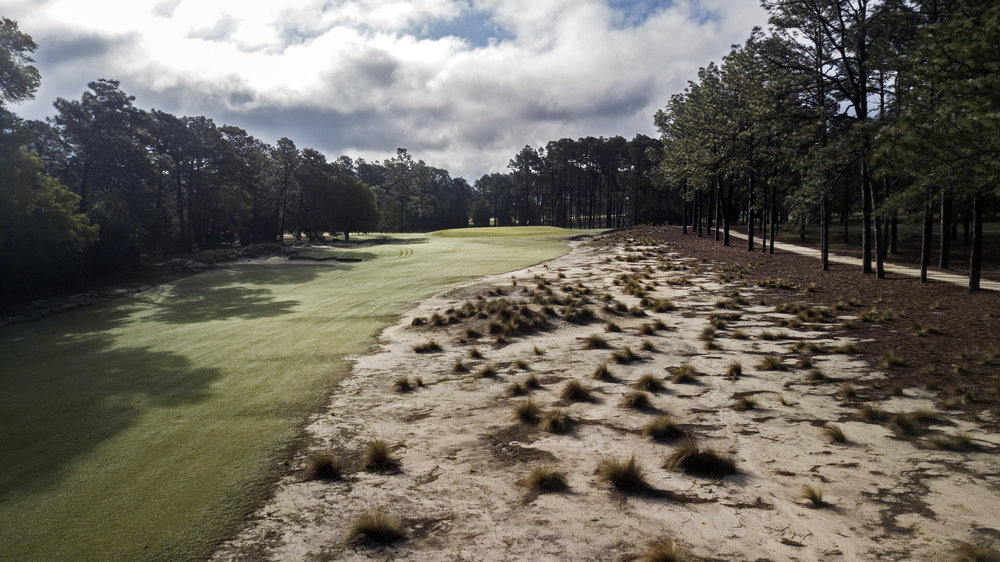
Way right on the 8th yields an excellent angle
The 8th hole is a masterpiece because of its out-of-this-world green complex. Like most holes at Pinehurst, the green dictates the ideal strategy. The wide playing corridors require players to understand the benefit of angles in order to succeed. It’s what makes Pinehurst #2 one of the country’s finest championship tests – thought and execution are required to tame it.


 by
by 
